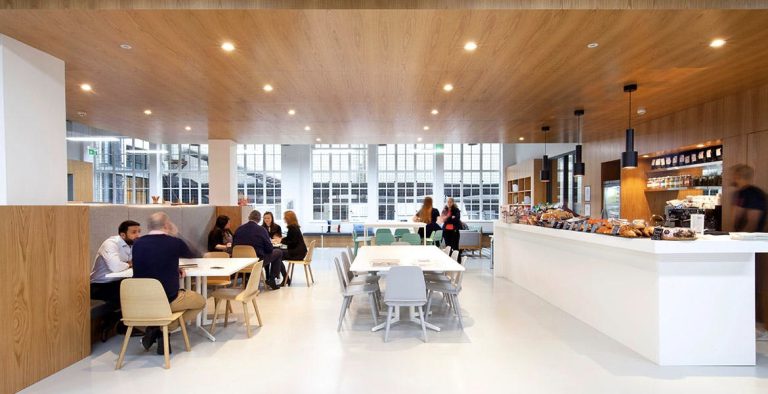Embracing Hybrid Working: Redefining Office Spaces Post-Pandemic

As the world grappled with the challenges brought on by the pandemic, the way we work underwent a radical transformation. Hybrid working emerged as a popular approach, blending remote work with office attendance. Post-pandemic, businesses are increasingly embracing this method, recognising the need for more dynamic and adaptable office spaces – and at SketchLabs, we are in the business of finding this very type of office space.
In this blog post, we will explore the rise of hybrid working, its significance in the modern workforce, and why office spaces must evolve to meet the demands of this new working model.
The Emergence of Hybrid Working
Hybrid working has become a buzzword in recent times and for good reason. The pandemic forced organisations to adapt rapidly to remote work, and in the process, they discovered the potential of this flexible approach. Employees experienced a better work-life balance, saved time on commutes, and found increased productivity in their home environments. When you couple this with the cost of living crisis, anything that can be done to better accommodate workers is essential – especially with train and bus strikes in more recent times.
What also became apparent is that certain aspects of in-person office collaboration were missed, like spontaneous brainstorming sessions, face-to-face interactions, and the camaraderie that comes from working in a shared space.
The Role of Office Spaces in a Hybrid World
Office spaces now need to be more than what they were in the past. No more of the slough look that’s for starters!
They must provide an environment that facilitates collaboration, fosters creativity, and promotes well-being. While remote work offers freedom and flexibility, it cannot entirely replace the value of a physical office. As a result, businesses are opting for a hybrid approach that allows employees to choose when and where they work based on the nature of their tasks.
Finding office spaces which match these needs whilst also retaining a workforce who remain positive and productive is the critical balance that leaders and office managers are tackling in today’s extreme workforce.
Collaboration is Key
One of the main reasons businesses are turning to hybrid working is to strike a balance between remote independence and in-person collaboration. Office spaces play a pivotal role in nurturing this balance. In-person interactions can spark innovative ideas and strengthen team bonds. Designing office layouts to encourage teamwork, with open spaces, breakout zones, and collaborative workstations, becomes essential in this context.

The Need for Good Office Environments
A good office environment goes beyond a simple desk and chair setup. It involves creating spaces that inspire creativity, promote well-being, and offer a sense of belonging. In a hybrid working model, employees may not spend as much time in the office as before, making every moment in the workspace count. Comfortable, aesthetically pleasing surroundings can boost morale and productivity, making employees feel valued and motivated.
What does it say to an employee when leaders prioritise their wellbeing? You can only assume good things, that’s for certain.
The Role of Landlords
In the post-pandemic world, landlords have a significant part to play in providing suitable office spaces. They need to adapt their properties to meet the evolving needs of businesses and their employees. This might involve investing in modern amenities, ensuring proper ventilation, and providing versatile spaces that cater to various working styles.
The Importance of Desk Partners
With the possibility of shared workstations, the choice of desk partners becomes crucial. As employees might not be present in the office every day, having compatible and reliable desk neighbours can contribute to a positive work environment. Businesses should foster a culture of respect and collaboration among their employees to create a harmonious shared workspace.
Hybrid working has emerged as a powerful solution to balance remote work advantages with the benefits of in-person collaboration. As businesses embrace this new approach, office spaces must adapt and transform into dynamic environments that cater to the evolving needs of the modern workforce. Collaboration, good office environments, considerate landlords, and compatible desk partners all contribute to creating a workplace that inspires productivity, creativity, and employee well-being.
By recognising the significance of these factors and investing in flexible and adaptable office spaces, businesses can navigate the future with confidence, attracting and retaining top talent while maximising their potential for success in the hybrid working era. Embracing change and reimagining the traditional office will be a crucial strategy in the post-pandemic world, creating a win-win situation for both employers and employees.